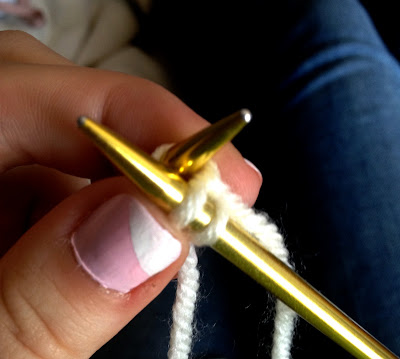Since today is the last installment in my Back to Basics series I thought it was only right to end with a bind off tutorial. This is the basics of the basics, something every knitter needs to know how to do (unless you want to wear a scarf with a needle attached to your neck). There are many different ways of binding off, this is just one version.
 |
| To start your bind off row, knit two stitches onto your needle. |
 |
| Use your left needle to pick up the first stitch on your right needle and bring it over the needle... |
 |
| ...like this. |
 |
| You are now left with one stitch on your right needle, and one stitch is bound off. |
Next, knit one stitch so you again have two stitches on your right needle. Repeat the carry-over process. Continue this all the way down the row until only one stitch remains on your right needle (and none on your left). When one stitch is left, cut your yarn leaving a 3-4" tail and pull your needle away from the piece (this motion will automatically tie the tail). Next weave in ends. You're DONE!
And as for this cute little nub, I think it'll make a great bookmark...




































.jpg)

.jpg)